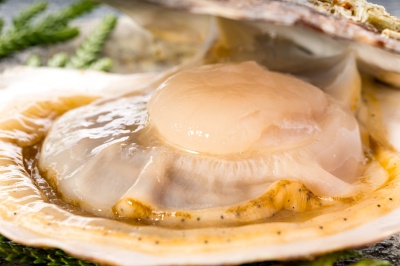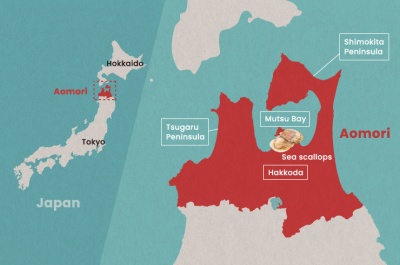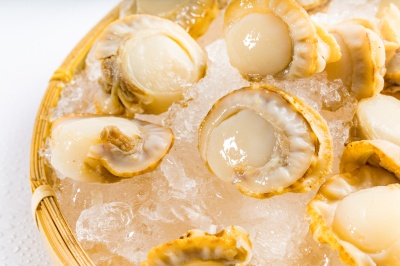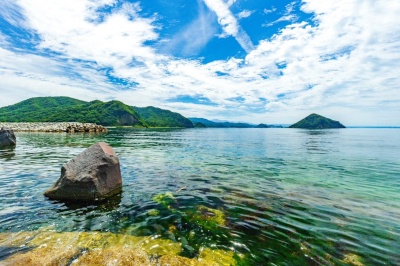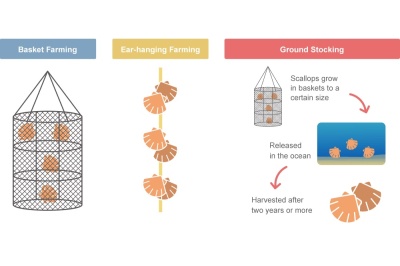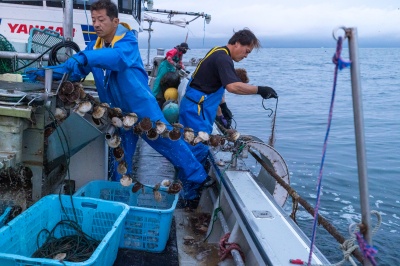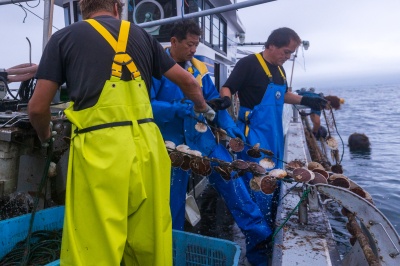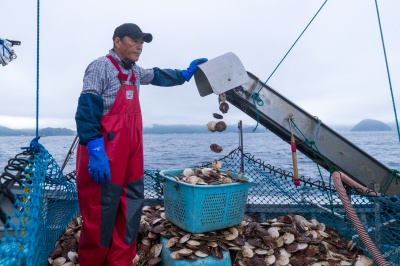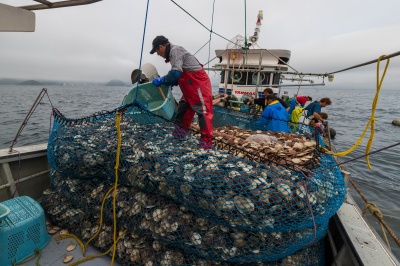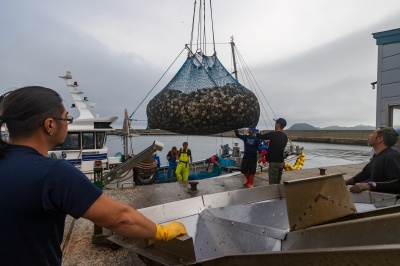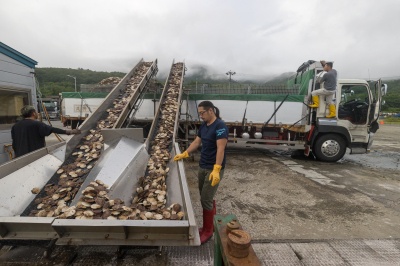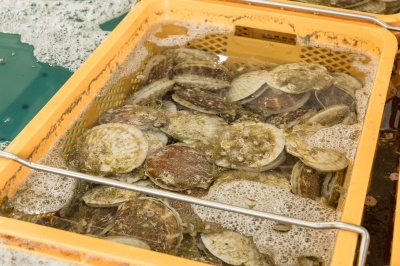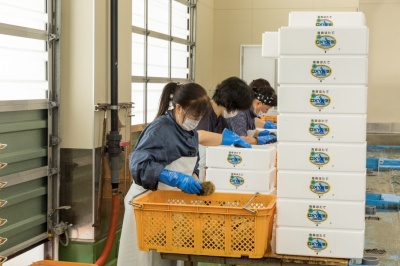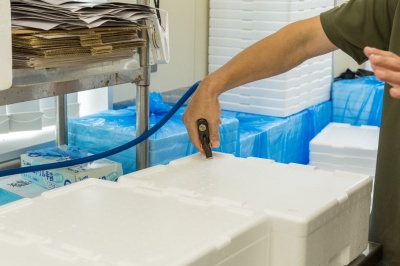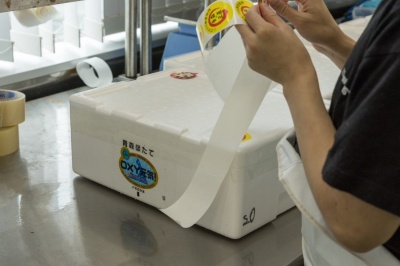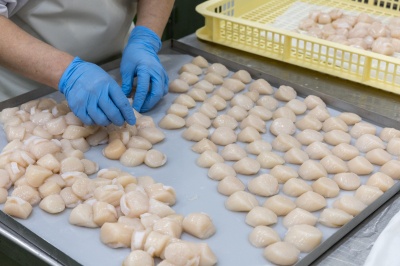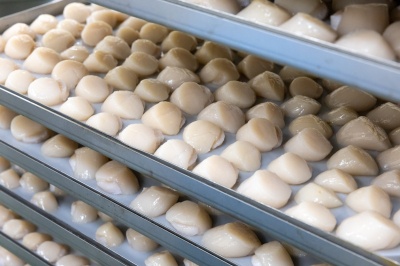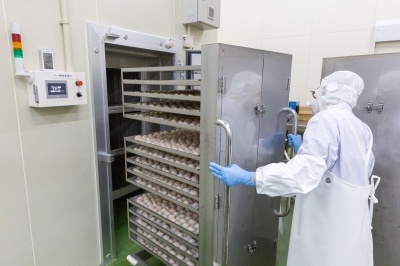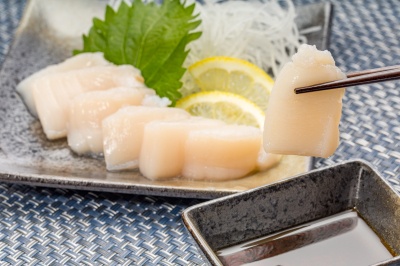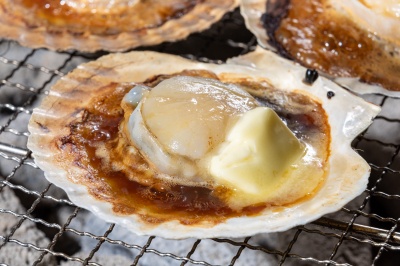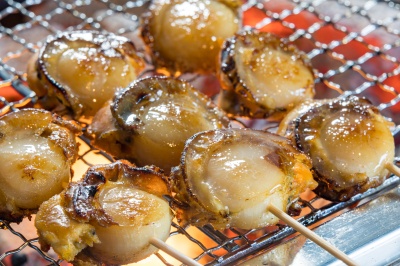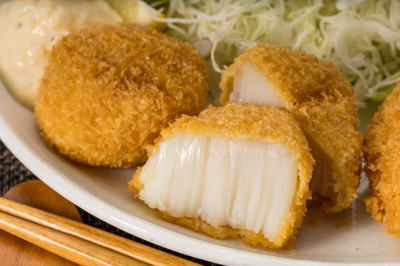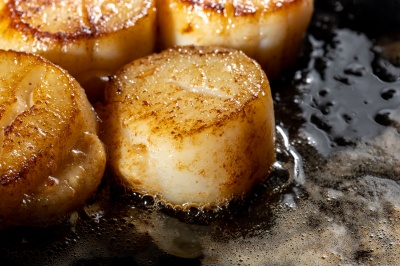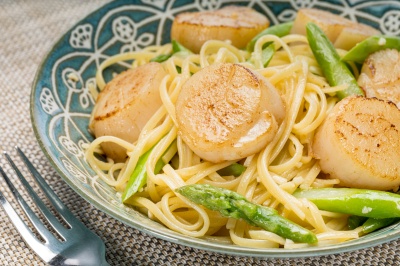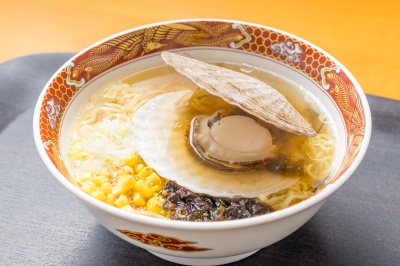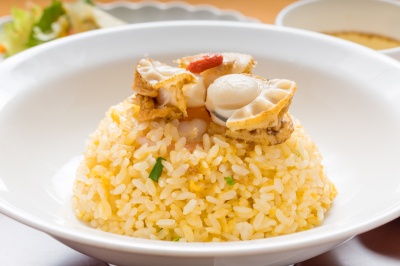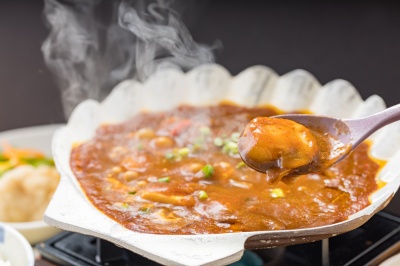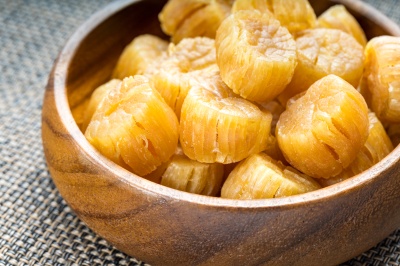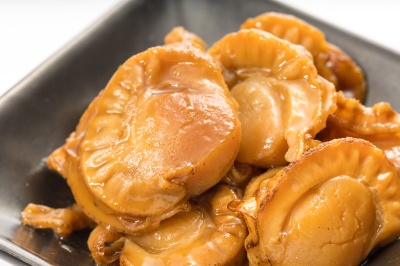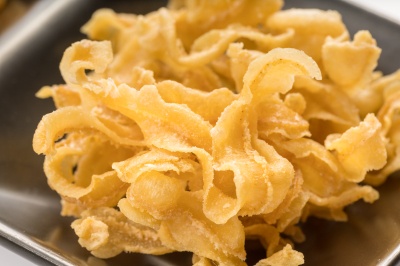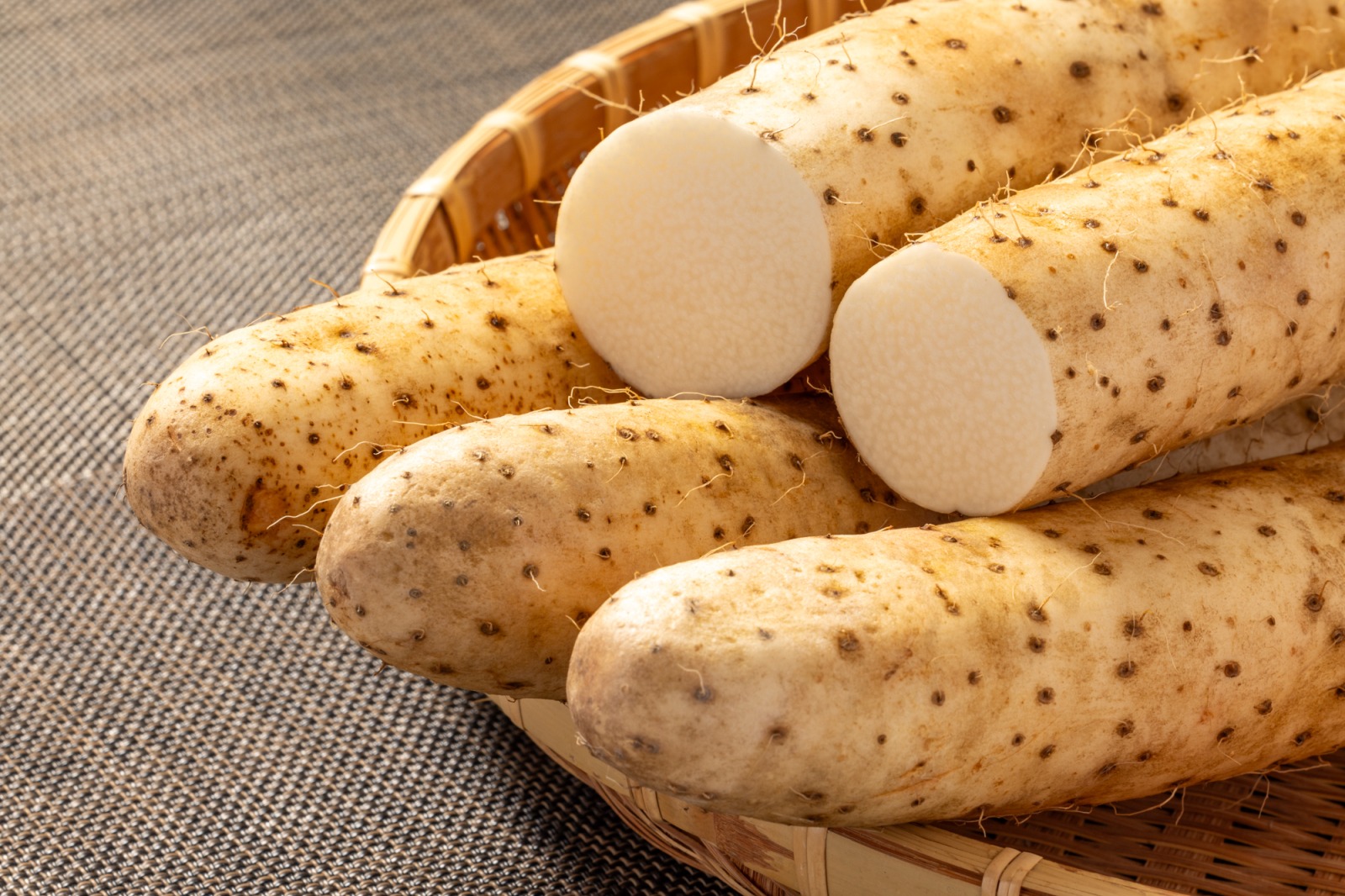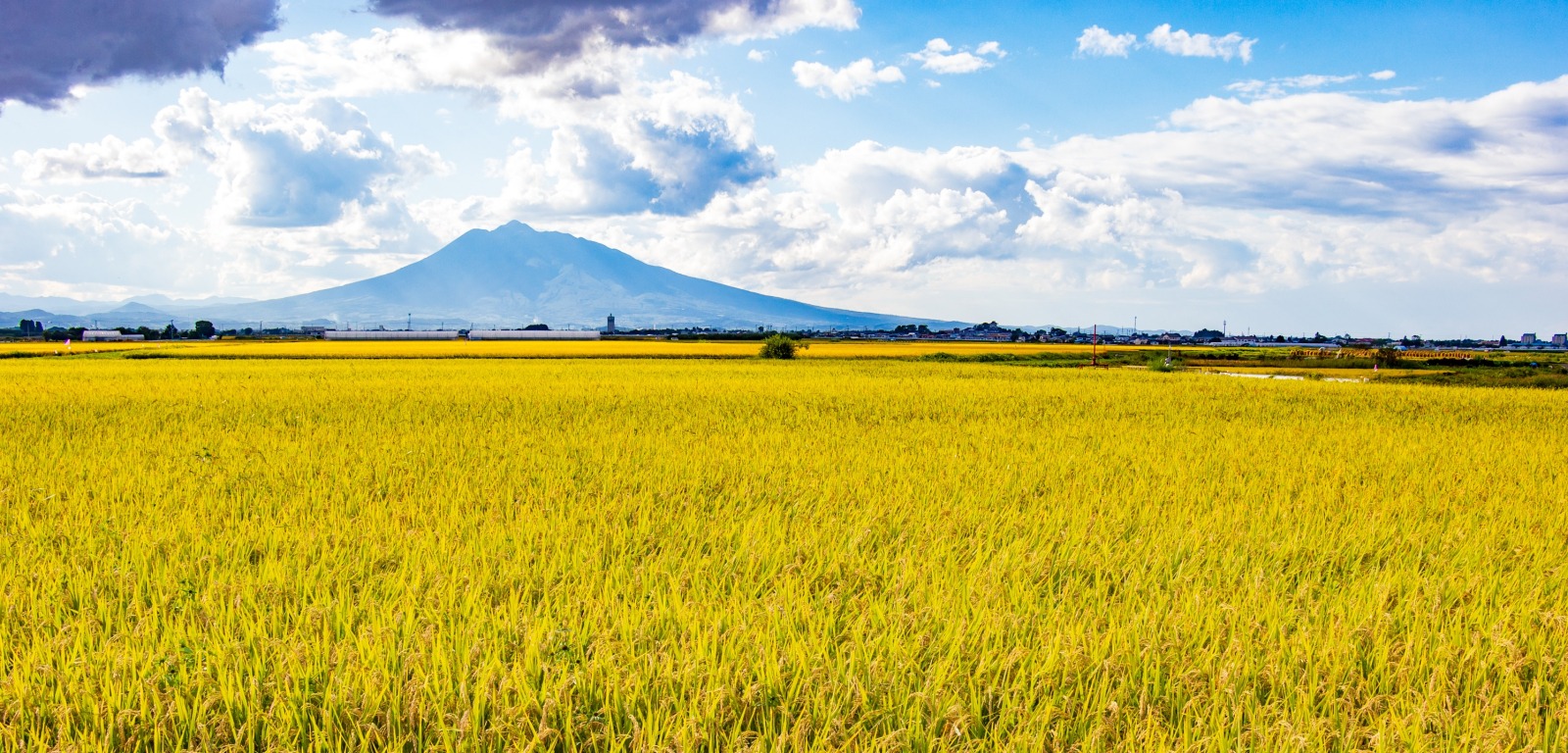The appeal of Aomori scallops, a popular food loved around the world
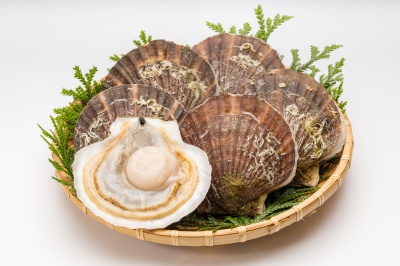
Situated on the northern tip of Japan’s main island of Honshu, Aomori boasts the largest catch of farmed scallops in the entire country. Scallops, or hotate in Japanese, are a popular part of Japanese cuisine and also feature in other global food cultures, including western and Chinese cuisine. Delve into this article to find out some of the secrets behind their popularity, from the way they are caught, to the latest preservation technologies, and the various ways they can be eaten.
Natural environment of Mutsu Bay produces delicious scallops
In Aomori, the northernmost prefecture of Honshu Island, there is an expanse of bountiful ocean known as Mutsu Bay. Situated between the Shimokita and Tsugaru peninsulas, and surrounded by the Hakkoda mountains, Mutsu Bay has long been famed as a fishing ground where many scallops can be caught.
Scallops are bivalves that live in cold seas and Mutsu Bay in Aomori boasts the largest catch of farmed scallops in the whole of Japan. Among all the seafood produced in Japan scallops are particularly popular and overseas exports continue to increase.
There are some specific reasons as to why Mutsu Bay is famous for its delicious scallops.
Thanks to its topography, surrounded by the Shimokita and Tsugaru peninsulas and ringed by the Hakkoda mountains, a tremendous volume of nutrient-rich water runs from the mountains into the bay, which is rich in phytoplankton. Feeding on this source of fresh plankton the scallops can grow slowly in the calm waters of Mutsu Bay, while gaining an intense richness of flavor.
Mutsu Bay can well be said to be an environment where all the conditions are in place for delicious scallops to thrive.
Asking today’s fishers about scallop farming in Mutsu Bay!
The gathering of farmed scallops in Mutsu Bay reaches its peak between June and August. In the grey early morning light, before the sun rises, the scallop fishers set out in their boats to the scallop grounds that lie off the coast.
In Mutsu Bay three methods of scallop farming are used: “basket farming” and “ear-hanging farming,” where scallops are hung in baskets or on ropes in the ocean, and the “ground stocking” method, where juvenile scallops are released onto the sea floor.
Yoshio Tamura is a scallop fisher from Hiranai Town, which is the biggest producer of scallops in Aomori Prefecture. He has been farming scallops using these methods for 20 years. Scallops cultured using the ear-hanging method are ready for harvesting when they reach approximately 7 cm. Tamura says, “If water temperatures rise above 20 degrees Celsius for multiple days scallops will die, so we must go and gather them early in the morning before the sea temperature rises.
The scallops are landed once during the winter, at which time their shells are pierced, and each scallop is individually attached to a rope. It is these ear-hanging ropes that are drawn up at harvest time. Each rope usually has 200 scallops attached and altogether there are approximately 1,700 to 1,800 ropes! Each rope is pulled up into the fishing boats by hand, by a team of scallop fishers. It is a task that requires strength and teamwork.
The scallops are next placed in nets. Tamura says, “Each time we take the boat out we haul in approximately 4.5 tons. On a busy day we might go out three times in the space of a single day.” So on some days just a single boat can land more than 12 tons of scallops.
Upon returning to the docks a truck is waiting to transport the scallops. The nets are lifted from the boat by crane and loaded onto the truck to be taken to the processing plant. Whether the scallops are shipped live or processed depends on their cultivation method and size.
Latest technologies keep scallops fresh
Scallops are a healthy food that while being high in protein are also low in fat. They have high nutritional value, being rich in various vitamins and minerals, such as taurine and vitamin B2, which are effective in relieving fatigue.
Various cutting-edge technologies are used to ensure that scallops can be exported in the freshest condition possible. One of these technologies is “OXY Genki!” a packing technology for live scallops. First developed by an Aomori research institution, OXY Genki! technology keeps the scallops alive and well for approximately four days after packaging by sealing oxygen in the container in which they were packaged.
This technology makes it possible to send live scallops to far-off destinations where shipment may take two days or more.
Rapid freezing is another key technology. Individual scallop adductor muscles are neatly lined up and rapidly frozen to minus 35 degrees Celsius, using a “proton freezer,” which freezes the scallop without degrading its fibers. This technology has resulted in the creation of what is referred to as the “Tamarei,” or rapidly frozen scallop adductor muscle. Scallops frozen in this way do not drip even if they defrost, meaning that the umami richness remains inside the scallop, so that it loses none of its deliciousness when defrosted and served as sashimi.
The various efforts by scallop fishers and technological improvements in distribution have made it possible for Aomori scallops to be produced stably and delivered to overseas markets far from the production region.
Uses for scallops in various cuisines, from Japanese to Western and Chinese
Aomori scallops have a delicate and appealing flavor, making them a perfect ingredient that can easily be used in various cuisines, from Japanese to Chinese and Western.
There is nothing better than a thick and juicy scallop, freshly prepared and served plump and chewy as sashimi. Other good ways to prepare scallops include char-grilling or grilling in the shell with butter and soy sauce.
A famous local dish in Aomori, the home of scallops, is “Kaiyaki miso,” a dish where a large scallop shell is used as a bowl in which a scallop is simmered together with an egg.
Although scallops are often eaten raw in Japan as sashimi or sushi, they can also be cooked in other ways and are delicious boiled, grilled or fried.
For example, fried scallops, where the adductor muscle is dipped in batter, are even more filling that fried shrimp. Another delicious example is to mix scallops with pasta and just a light seasoning.
Salt ramen noodles with scallops is a dish that accentuates the seashore umami of scallops. Scallops also make a mouthwatering addition to mapo tofu or seafood fried rice.
There is also a rich variety of processed scallop products. Boiled scallops can easily be used as an ingredient and grilled or dried scallops can simply be eaten as they are as a snack.
The taste of dried scallop products differs depending on the part of the scallop used, whether it is the adductor muscle or the mantle, etc. Canned scallops are also recommended for their intensely concentrated umami flavor. You can enjoy a wide variety of processed scallop products.
Here we have provided an introduction to the appeal of Aomori scallops. Boasting high nutritional value they are a truly universal food that pairs well with almost any vegetable. Why not try mouthwateringly fresh Aomori scallops for yourself?
